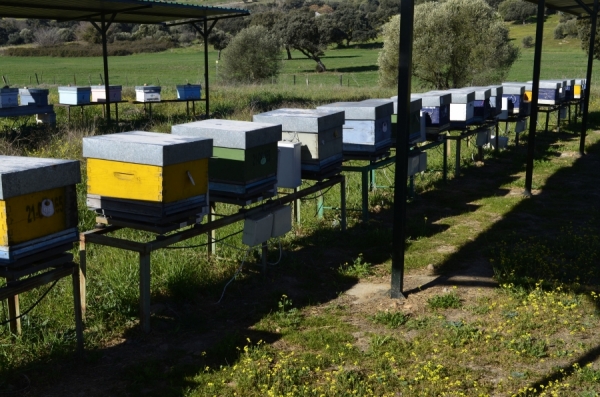Honeybee colonies are bioindicators of environmental contamination in the area, since they get coated in everything that there is in the environment, including pollutants, and they end up taking it all back to their bee hives.
Bees sample a significant range of spaces, because they have a wide flight range, becoming covered with whatever build-up is in the air, water and the ground as well as on trees and flowers. In addition, when they reach the hive, they also transport nectar they have collected, which passes to the other bees, and spreads throughout the hive. However, the use of hives to understand the state of environmental contamination involves capturing bees and extracting what they have ingested and transported on the surface of their body. Also, sampling can be done with larvae, pollen reserves and honey. All of this is tedious and, at times, aggressive for the hive.
With the intention to continue obtaining information about environmental pollution that bees can provide, and without altering the normal functioning of hives, Professor José Manuel Flores, from the Department of Zoology at the University of Cordoba, collaborated on a European project at the University of Almeria, putting APISTrip into operation, a non-invasive tool to sample contaminants in hives.
APIStrip (Adsorb Pesticide In-hive Strip) is based on the use of a polystyrene strip upon which a concentrated solution of Tenax is applied, a product that can be used to collect samples that bees carry and later, adsorbed pesticides and pollutants on the surface are extracted and analyzed. To date, with this method, up to 442 kinds of pesticides can be detected.
When validating this technology, they have performed field studies in Cordoba and in Denmark. Professor José Manuel Flores led several APIStrip trials in the bee colony at the Rabanales Campus, testing different quantities of the product, different placements of the strip and different durations APIStrip was left in the hives. They determined that the ideal method to extract contaminants is using a 5x10 cm strip with 1g of Tenax for 14 days.
Two of the main toxic risks for bees comes from treatments applied by beekeepers to control a parasitic mite and nearby use of plant protection products. With the Denmark sampling, up to 40 different pesticide residues were found.
With this methodology, bees become a sample collector of their surroundings and bioindicators of environmental contamination without suffering any disruptions to their normal routine, thus allowing us to understand the environmental conditions of their surroundings and plan actions to improve environmental health.
Murcia-Morales, M., Steen, J., Vejsnæs, F., Díaz-Galiano, F., Flores, J., Fernández-Alba, A. (2020). APIStrip, a new tool for environmental contaminant sampling through honeybee colonies. Science of The Total Environment. 729. 138948. 10.1016/j.scitotenv.2020.138948


